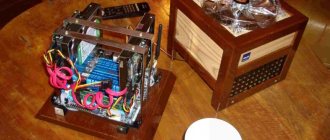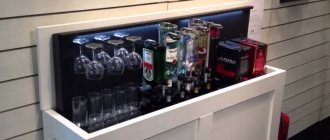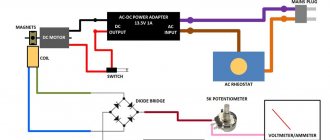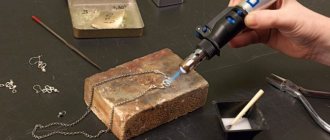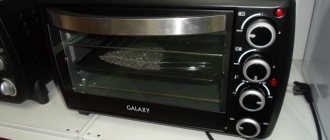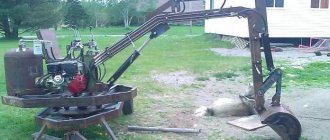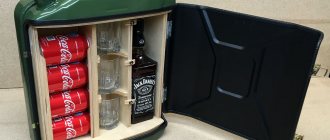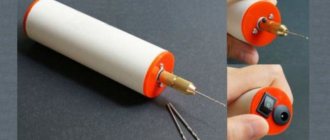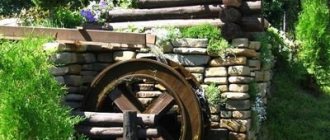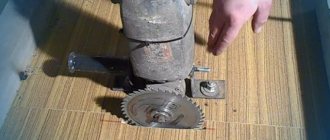The power of water flow is a renewable natural resource that allows you to obtain virtually free electricity. The energy donated by nature will provide an opportunity to save on utilities and solve the problem of recharging equipment.
If there is a stream or river running near your home, it is worth taking advantage of it. They will be able to provide electricity to the site and the house. And if you build a hydroelectric power station with your own hands, the economic effect increases significantly.
The presented article describes in detail the manufacturing technologies of private hydraulic structures. We talked about what is required to set up the system and connect it to consumers. Here you will learn about all the options for miniature energy suppliers assembled from scrap materials.
What is a mini hydroelectric power station
First, let's define the operating principle and types of small hydroelectric power plants. The flow of a river or a falling water stream rotates the turbine blades and a hydraulic pipeline, which is connected to an electric generator - the latter generates electricity. Modern compact hydroelectric power plants have automatic control with the ability to instantly switch to manual mode in the event of an emergency. The designs of modern factory hydroelectric power plants make it possible to minimize construction work during equipment installation.
Advantages and disadvantages of microhydropower
The advantages of a mini hydroelectric power station for the home include:
- Environmental safety (with reservations for juvenile fish) of equipment and the absence of the need to flood large areas with colossal material damage;
- Ecological purity of the energy produced. There is no effect on the properties and quality of water. Reservoirs can be used both for fishing activities and as sources of water supply for the population;
- Low cost of generated electricity, which is several times cheaper than that generated at thermal power plants;
- Simplicity and reliability of the equipment used, and the possibility of its operation in autonomous mode (both within and outside the power supply network). The electric current they generate meets GOST requirements for frequency and voltage;
- The full service life of the station is at least 40 years (at least 5 years before major repairs);
- inexhaustibility of resources used to generate energy.
The main disadvantage of micro-hydroelectric power stations is the relative danger for the inhabitants of aquatic fauna, because Rotating turbine blades, especially in high-speed flows, can pose a threat to fish or fry. The limited application of the technology can also be considered a disadvantage.
Types of mini hydroelectric power plants
Mini power plants include generating devices with a capacity from 1 to 3000 kW. Fundamentally, the thermal power plant consists of:
- turbines (water intake device);
- generating block;
- control systems.
According to the type of water resources used for generation, mini hydroelectric power stations are:
- Channel rivers. Such stations are built on small lowland rivers with reservoirs.
- Mountain. Stationary stations that use the energy of fast mountain currents.
- Industrial. Stations that use differences in water flow at industrial enterprises.
- Mobile. Stations using reinforced hoses for water flow.
Dam types of stations are characterized by high power, but the construction of a dam is expensive, and in this case it is impossible to do without permits. Getting involved with officials in our country is not just complicating your life, but calling into question the implementation of the best intentions, so we will abandon this idea right away.
Features of construction and operation
The choice of a specific modification of a hydroelectric power station is determined by the terrain features and the estimated efficiency of the river flow. The general scheme of all types necessarily includes debris collection grids at the inlet openings, a command and control center, a platform for servicing electrical equipment and transformers that convert the generated electricity into 220 V or other required voltage standard.
To construct a hydroelectric power station generator, common standardized elements are used. All equipment is wear-resistant, has a long service life and minimal maintenance requirements. But in general, the design of each station is unique. A design tied to a specific geographical area cannot be repeated, just as it is impossible to find two identical river basin conditions.
Having understood how a hydroelectric power plant works, we can formulate its advantages relative to thermal power plants and nuclear power plants:
- water is a renewable and clean source of energy;
- high efficiency;
- no fuel costs;
- reduction in maintenance and personnel costs;
- low risk of accidents.
The reason why hydroelectric power generation accounts for only about 20% of the world's electricity production is because of the irreversible impact on the ecosystem along the entire riverbed and the irrigation of the surrounding areas. The size of the entire hydroelectric complex, including the reservoir, reaches hundreds of thousands of hectares. There are still no reliable methods for comprehensively assessing the scale of such influence.
How does a mini hydroelectric power station work?
The principle diagram of the operation of a hydroelectric power station can be chosen from several options:
- Garland hydroelectric power station. From one bank of the river to the other, a cable with rotors strung on it is laid under water. The current rotates the rotors and, accordingly, the cable itself. One end of the cable is in a bearing, the other is connected to the generator.
- Propeller. An underwater structure resembling a wind turbine with narrow blades and a vertical rotor. A blade with a width of only 20 mm at a high rotation speed will provide minimal resistance. A blade of this width is selected at a flow speed of 0.8–2.0 m per second.
- Water wheel. A wheel with blades, partially submerged in the flow, and located at right angles to the surface of the water. The flow of water presses on the blades, rotating the wheel.
- Rotor Daria. Vertical rotor with complex blade surfaces. The liquid flowing around the blades creates different pressures, causing rotation.
The photo shows a mini hydroelectric power station based on a water wheel
Negotiation difficulties
However, lighting one candle, figuratively speaking, is one thing, but lighting thousands, giving people light, as Prometheus did, is a completely different matter.
A compact hydroelectric power station as a source of electricity, by its appearance in everyday use, can disrupt the established picture and state of affairs. The largest monopolies are accustomed to the fact that they are the ones who produce electricity for small settlements; sales subsidiaries are accustomed to receiving money for delivering goods - kWh to the consumer. Where to fit mini hydroelectric power stations into this scheme? And not yet controlled by monopolists? I’ll say right away that it will not be easy to coordinate such a project with local authorities in Russia, just like any other new business. But the result is worth the effort.
In general, a compact (mini) hydroelectric power station means a station that produces power up to 100 kW. Craftsmen, working with their hands and heads, can quite easily build this useful thing in their town or village, even in a private household. But only if there are appropriate natural conditions and the desire to create something NEW, save money, that is, pay less for electricity in the future.
If you watch a video or photo of some mini-hydroelectric power plants, you will see that sometimes they look very strange. But for the contemporaries of Leonardo Da Vinci, his flywheels with huge wings also seemed at least strange, and with his daring experiments and ideas, the great Italian completely terrified many people of his time. So what? We don't remember those people. And Leonardo’s drawings and creations will live on for centuries. Build a mini-hydroelectric power station with your own hands, experiment, dare! Nature and descendants will only say “Thank you” to you!
Mikhail Bersenev
There are also craftsmen in Tajikistan, no worse than Indian ones:
How to estimate the potential capacity of mini hydroelectric power stations
Before building a mini hydroelectric power station with your own hands, you need to determine the power you can count on. There is a reference relationship between the speed of water flow and the power that can be removed from the shaft in kW with a screw diameter of 1 m.
The speed of the flow is determined by measuring the time it takes for a chip thrown into water to travel a certain distance. Having made simple calculations, we obtain the flow speed in meters per second. If in this case the speed is less than 1 m/sec, then the construction of a hydroelectric power station will not be economically feasible.
At a flow speed of 2.5 m/s, the power will be 0.86 kW, at 3 m/s - 1.24 kW, at 4 m/s - 2.2 kW. The relationship is described by the dependence: the power of a hydroelectric power station is proportional to the cube of the water flow velocity. If the flow velocity at the proposed construction site is low, you can try to increase it by installing a difference in flow heights or by installing a drain pipe with a variable diameter at the outlet of the reservoir. The smaller the outlet diameter of the pipe, the higher the flow rate.
Areas and advantages of application
An alternative to using oil stations is to use compressor-type units. However, if we compare installations of these types, then hydraulic power stations for hydraulic drives have a number of advantages.
- Due to the more compact size of such equipment, you have to spend significantly less money on its transportation, installation and operation.
- When operating hydraulic oil stations, significantly less energy resources are consumed, which also leads to a reduction in financial costs.
- Oil stations, compared to compressor equipment, have higher productivity and efficiency of use.
- The wide versatility of such equipment allows it to be connected to devices of various types and power.
- Compared to compressor equipment, oil stations produce significantly less noise during operation.
- Due to the ease of use and maintenance, specially trained, highly qualified personnel are not required to work with such equipment.
Pumping station as part of a hydraulic pipe bender
Hydraulic stations, naturally, are used to equip equipment on which a hydraulic drive is installed. In fact, with the help of such devices it is possible to operate a mechanism for almost any purpose. That is why hydraulic oil stations are successfully used in many areas. The technical capabilities and versatility of such devices allow them to be used for:
- static type hydraulic tools;
- electrical installation equipment;
- dynamic type hydraulic tools;
- equipment for railway and construction purposes;
- pumps and slurry pumps;
- equipment for drilling operations;
- injection molding machines;
- press equipment;
- devices used to lift and move large and heavy loads;
- equipping test stands;
- technological equipment for various purposes.
Oil station of a lathe
Using hydraulic oil stations, they pump and purify oil, and also lubricate and cool working elements of equipment for various purposes. Oil stations are used quite actively in cases where it is necessary to test pipeline systems, hydraulic equipment, hydraulic cylinders and various equipment.
If we talk about the areas of activity in which hydraulic oil stations are most actively used, then this should include:
- mechanical engineering;
- metallurgy;
- energy;
- construction;
- Agriculture;
- transport sector.
How to make a mini hydroelectric power station at home
The operating principle of a small homemade hydroelectric power station can be understood using the example of a bicycle with a headlight and a dynamo (generator).
- From roofing iron we make three blades with a length equal to the radius of the bicycle wheel (the distance from the central hub to the wheel rim) and a width of 3-4 cm.
- We install the blades between the spokes of the wheel, bending the edge of the blade around the spokes to secure it. The blades should be aligned evenly while maintaining the same angles between them.
- We immerse the wheel with blades in a fast river to a depth of one third to half the diameter of the wheel. The generated electricity will be enough, for example, to light a tent.
Drawing of one of the options for constructing a mini hydroelectric power station
An example would be a small hydroelectric power station for a farm with a capacity of 3-5 kW from scrap materials:
- The rotor can be made from an old metal cable drum with a diameter of 2.2 m. Using a grinder and welding at an angle of 45 degrees to the radius, 18 blades need to be welded. The rotor rotates on bearings. Support – metal pipe or angle.
- On the rotor you need to install a chain gearbox with a gear ratio (gear ratio) of 4. Next, the rotation will be transmitted through the VAZ 2101 driveshaft. The use of a driveshaft will reduce vibration, and the coaxiality of the drive and generator when using the shaft will be uncritical.
- You will need a step-up gearbox (coefficient - 40) and a three-phase generator. The generator rotation speed is about 3000 rpm. The total reduction ratio of the two gearboxes will be 40 x 4 = 160. The generator should be covered with a casing to protect it from moisture and safety. The estimated rotation of the water wheel should be about 20 revolutions per minute.
- An asynchronous motor can be adapted for the generator, and the control unit can be taken from any small machine. You will need a VVG NG cable 2x4 long from the rotor to farm buildings.
Generator application
- environmental cleanliness;
- low capital costs.
Note. According to the Eurasian Development Bank, investment costs for micro hydroelectric power stations are equal to $1,000-4,000 per 1 kW of installed capacity. The lower limit applies to low-power units operating without retaining dams. Annual operating costs range from 1.5% to 2.5% of investment costs.
Now Chinese manufacturers produce and supply to the market a number of devices with power from 0.6 kW to 20 kW. For example, the Turgot 5000 model costs 143,000 rubles. It is a hydraulic turbine with a coaxially installed electric generator with a power of 5 kW. Consists of a guide vane, rotor and control valve.
The device can be most effectively used with a diversion pipeline, which is connected to the unit’s branch pipe. Water enters the guide vane, through which it enters the turbine blades, rotates it and drains out.
By the way. Investment costs for the equipment of a diversion micropower plant with such a 5 kW turbogenerator will be $1,000/kW × 5 kW = $5,000 = RUB 320,000.
The devices can be used for the needs of small businesses in areas remote from stationary power grids. For example, entrepreneurs who have portable sawmills cut timber in winter, when wood export is permitted. Installing a 5 kW micro hydroelectric power station can significantly reduce costs.
During the daytime, the main consumer is the sawmill; during other hours, electricity is used to heat the premises. Thus, during cold periods the full power of the hydrogenerator is used, in summer the load is much lower and a seasonality factor of 0.5 is taken into account.
Example. Annual electricity consumption will be approximately 5 kW × 24 hours/day × 365 days × 0.5 = 21900 kWh, where 0.5 is a seasonality indicator. Then, with an average tariff of 5 rubles/kWh, we obtain annual costs in the amount of 21,900 kWh × 5 rubles/kWh = 109,500 rubles.
The economic efficiency of such a scheme can be defined as the payback period of a microhydroelectric power station. It is easy to calculate that with a guarantee of 15 years or more, the figure is approximately 300,000 rubles/109,500 rubles. = 3.3 years. This is an acceptable figure for similar projects.
A promising direction for increasing the efficiency of using microhydroelectric power plants is to conserve the generated energy during periods when the generator is not fully loaded. The use of heat accumulators based on a mixture of alkali metal salts with high heat capacity can significantly improve the efficiency of heating systems in homes in winter.
Operating principle
The operating principle of micro-hydroelectric power stations is similar to the operation of large and small hydroelectric power stations. The difference lies only in the power of the installed equipment and the amount of electrical energy generated. The production of electric current is carried out by a generator, the rotational movement of the rotor to which is transmitted from a hydraulic turbine. In order for the turbine to start rotating, water pressure is created on the reservoir where the mini hydroelectric power station is installed. This can be pressure created by the natural flow of water masses, or created by the construction of a dam or other technical structure. In certain cases, both methods of creating pressure can be used simultaneously. Under the influence of pressure, water flows rush in the required direction; a turbine is mounted in the direction of their movement, the blades of which receive the energy of the moving water masses. This kinetic energy of water is converted by a turbine into rotational motion, which is transmitted through a mechanical transmission (gearbox) to the generator shaft.
The energy source can be:
Depending on the type of equipment used and the method of its installation, the operating principle of a hydroelectric power station may vary. These may be the following options:
Advantages of using micro-hydroelectric power stations:
conclusions
The total manufacturing costs will be about 10-15 thousand rubles. The main expense item is the wages of the welder and worker who help make and assemble the structure.
The main advantages of such equipment are the low cost of electricity, environmental safety, inexhaustibility of the energy source and simplicity of design.
Regular increases in electricity prices make many people think about the issue of alternative sources of electricity. One of the best solutions in this case is a hydroelectric power station. The search for a solution to this issue concerns not only the scale of the country. More and more often you can see mini-hydroelectric power plants for the home (dacha). The costs in this case will only be for construction and maintenance. The disadvantage of such a structure is that its construction is possible only under certain conditions. A water flow is required. In addition, the construction of this structure in your yard requires permission from local authorities.
Rotor Daria
A mini-hydroelectric power station for a private house of this type is named after its developer, Georges Darrieus. This design was patented back in 1931. It is a rotor on which the blades are located. The required parameters are selected individually for each blade. The rotor is lowered under water in a vertical position. The blades rotate due to the pressure difference resulting from water flowing over their surface. This process is similar to the lift that makes airplanes take off.
This type of hydroelectric power station has a good efficiency indicator. Threefold advantage - the direction of flow does not matter.
The disadvantages of this type of power plant include a complex design and difficult installation.
Making a hydro generator with your own hands
The most common alternative energy sources are wind generators, but they are highly dependent on weather conditions.
In the absence of wind or weak wind flow, they are ineffective. For normal operation of such generators, areas where the average annual wind speed is not lower than 5-6 m/s and higher are good. Do-it-yourself hydro generator
In Russia there are not many areas with intense winds, the steppes and the Black Sea coast of Kuban, the Far Eastern coast and up to a dozen uninhabited or small areas.
In the middle zone, in the mountains of the Caucasus, the Urals, Altai and other regions where there are small but fast-moving rivers, tributaries, and streams, people forget about the possibility of using hydroelectric generators.
It is not rational to refuse to use them; this is a guaranteed source of electricity, because a river with a stable level and flow is much more reliable than a changeable wind.
Turbine assembly
To assemble the turbine, we must pierce the center of the plug from 3 to 5 cm with a 1/4 “drill. Place the cork on the template using a pencil and mark where the spoons will be placed.
Using a knife, drill holes in the marked locations. Cut 8 plastic spoons, leaving a centimeter from the handle. Secure the spoons into the cork and adjust the angle and depth of each spoon so that they have the same angle relative to the cork. Secure all spoons with silicone. Take a 4 liter rectangular plastic bottle, cut it with scissors or a sharp knife, as shown in the photo.
Using a ruler, measure the center on one of the sides. Mark this point with a permanent marker. Repeat on the opposite side. Drill through both sides with a 1/4 drill bit at the mark you made. Using scissors, cut 2 1/4" PVC pipes. The tube should pass through the center of the plastic container, the stator and the shaft as shown in Fig.
The dowel is inserted through the turbine and container as shown in the picture above. The turbine is located inside the container so that the spoons are below the bottleneck. We also adjust the position of the vinyl hose so that they do not touch the inside of the container. Now place the second tube after installing the stator. The tubes help keep all parts of the turbine in place as it spins. We turn on the turbine to check that the turbine does not fall inside the container. Insert the rotor onto the shaft. The magnets should be about 2 or 3mm from the coils. Rotate the shaft to check that the magnets are not caught on the coils. Adjust the angle of the disk if necessary. If the rotor rotates smoothly, it locks the position of placing the hot glue on the dowel. Place the container next to the pipe and rotate the turbine with water. Use a multimeter to measure the energy they produce. Here are some video examples on creating a home hydroelectric power station:
There are various options for installing a water wheel. At the same time, the difference in height of the water flow can be organized artificially in order to increase the productivity of mini-hydroelectric power plants.
Water wheel installation options:
- Bottom water wheel (installed directly into the water flow);
- Medium water wheel (installed at the point where the height of the water flow differs so that the falling water flow falls approximately in the middle of the wheel);
- Top water wheel (installed at the point where the height of the water flow differs so that the falling water flow hits the top of the wheel)
Manufacturers of equipment for mini-hydroelectric power plants offer special turbine wheels equipped with blades optimized for a particular speed of water flow. Craftsmen make water wheels in the same way as their ancestors built water mills, that is, without any optimization. On the one hand, this reduces the efficiency of the installation, on the other hand, it is much cheaper than purchasing “store-bought” equipment.
A story about using a homemade power plant.
We'll show you why we had to connect the inverter, battery and charge control. How a hydroelectric power station works in winter at minus 30 under two-meter snowdrifts. In the spring, when the flood comes. Let's talk about upgrading and increasing power to several kilowatts in order to use heating for free in winter.
A hydroelectric power station was built using artisanal methods on a small river. They told us what parts the unit consists of, which produces electric current to power the apiary and the house.
A mini hydroelectric power station is a small hydroelectric power station that produces a small amount of electrical energy.
Propeller station
On the frame in a vertical position there is a rotor and an underwater windmill, lowered under water. A windmill has blades that rotate under the influence of water flow. The best resistance is provided by blades two centimeters wide (with a fast flow, the speed of which, however, does not exceed two meters per second).
In this case, the blades are driven by the resulting lift force, and not by water pressure. Moreover, the direction of movement of the blades is perpendicular to the direction of flow. This process is similar to wind power plants, only it works underwater.
Typical hydraulic station diagram
- Tank
- Pump
- Pressure filter
- Suction filter
- Drain filter
- Safety valve
- Hydraulic distributor
Tank
The hydraulic tank serves to store the working fluid circulating in the hydraulic system, release air from it and partially cool it. When designing a tank, normal conditions for suction and deaeration of the working fluid must be ensured. The size and shape of the tank are closely related to the temperature regime in the hydraulic drive, since some of the thermal energy released during the operation of the hydraulic system is transferred to the environment through the walls of the tank. During the production process, all tanks undergo mandatory leak testing and subsequent painting using special technologies and materials that are resistant to hot oil. To monitor the fluid level in the hydraulic tank, there is a visual level indicator. The fluid is drained through a drain hole or tap located at the bottom of the hydraulic tank. We have developed hydraulic tanks of various designs and sizes, which you can familiarize yourself with in the corresponding section of the catalog.
Pump
Hydraulic pumps are power elements of a hydraulic drive that convert the mechanical energy of rotation of the drive shaft into the hydraulic energy of the flow of working fluid, which is supplied through pipelines to the hydraulic motors. The most common type of pump unit for pumping hydraulic fluid into the system is made on the basis of a gear pump. Operating pressure range from 2 to 310 bar, flow rates from 0.5 to 100 l/min (standard range of pumps) and above 100 l/min. up to 5000 l/min. (supplied upon request). Such solutions are widely used in mobile and industrial technology. The next type of pumping units is with vane pumps. This type of pump provides more uniform flow compared to gear pumps and greater productivity. The operating pressure range is somewhat lower and rarely exceeds 160 bar (the imported industry produces pumps of 210 bar or more). Vane pumps can be produced as single- and double-flow, with fixed and adjustable performance, as well as a through shaft for installing an additional pump, for example, a gear pump. This type of pump is common in machine tools and hydraulic drives for a wide range of applications. Pumping units with axial piston pumps are characterized by compactness and the resulting minimum weight. Due to the use of working bodies with small radial dimensions and, therefore, a relatively small moment of inertia, such machines make it possible to quickly regulate the rotation speed. In addition, the advantages of axial piston pumps include the ability to operate at high pressures (up to 400 bar) and high efficiency values (up to 95%). Among the disadvantages of machines of this type, it should be noted the considerable cost, complexity of the design, as well as significant feed pulsation. Axial piston pumps are most widely used in hydraulic drives of machines operating under medium and heavy external load conditions with high switching frequencies. It is possible to manufacture units with 2-3 in-line pumps driven by one electric motor, which makes it possible to reduce the size of the system and use various combinations of performance and pressure to solve a wide range of problems.
Turbine assembly
To assemble the turbine, we must pierce the center of the plug from 3 to 5 cm with a 1/4 “drill. Place the cork on the template using a pencil and mark where the spoons will be placed.
Using a knife, drill holes in the marked locations. Cut 8 plastic spoons, leaving a centimeter from the handle. Secure the spoons into the cork and adjust the angle and depth of each spoon so that they have the same angle relative to the cork. Secure all spoons with silicone. Take a 4 liter rectangular plastic bottle, cut it with scissors or a sharp knife, as shown in the photo.
Using a ruler, measure the center on one of the sides. Mark this point with a permanent marker. Repeat on the opposite side. Drill through both sides with a 1/4 drill bit at the mark you made. Using scissors, cut 2 1/4" PVC pipes. The tube should pass through the center of the plastic container, the stator and the shaft as shown in Fig.
The dowel is inserted through the turbine and container as shown in the picture above. The turbine is located inside the container so that the spoons are below the bottleneck. We also adjust the position of the vinyl hose so that they do not touch the inside of the container. Now place the second tube after installing the stator. The tubes help keep all parts of the turbine in place as it spins. We turn on the turbine to check that the turbine does not fall inside the container. Insert the rotor onto the shaft. The magnets should be about 2 or 3mm from the coils. Rotate the shaft to check that the magnets are not caught on the coils. Adjust the angle of the disk if necessary. If the rotor rotates smoothly, it locks the position of placing the hot glue on the dowel. Place the container next to the pipe and rotate the turbine with water. Use a multimeter to measure the energy they produce. Here are some video examples on creating a home hydroelectric power station:
